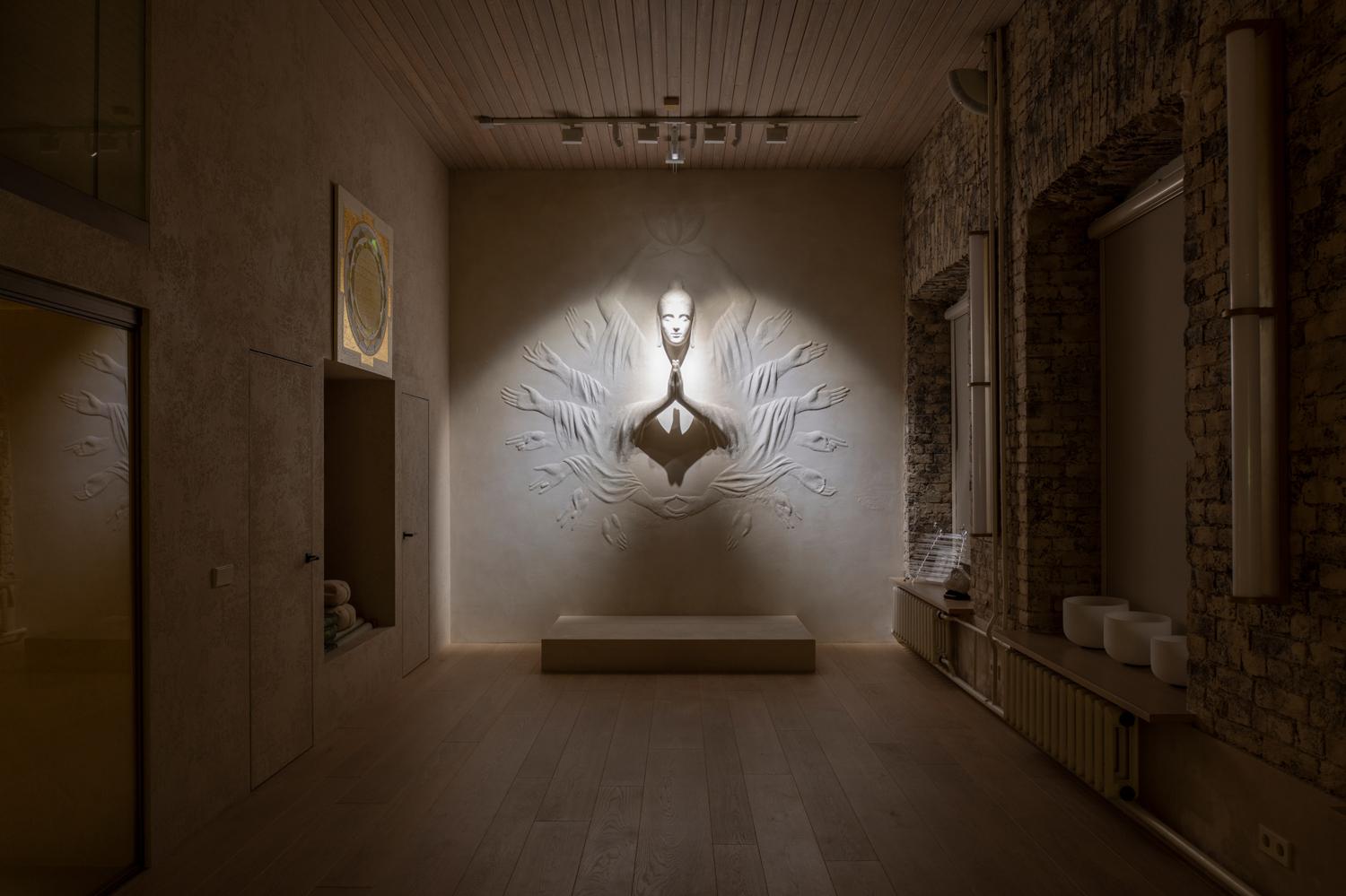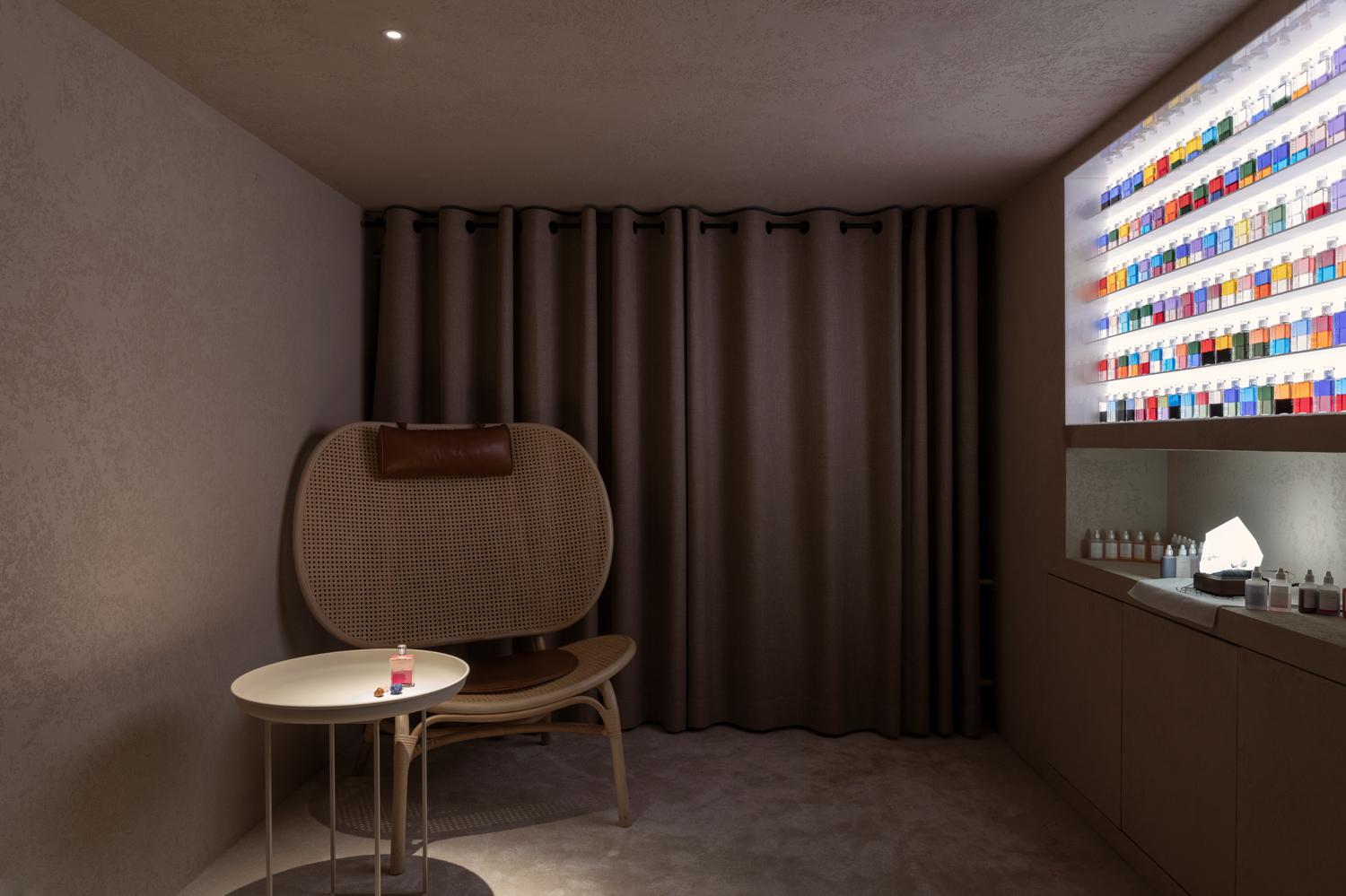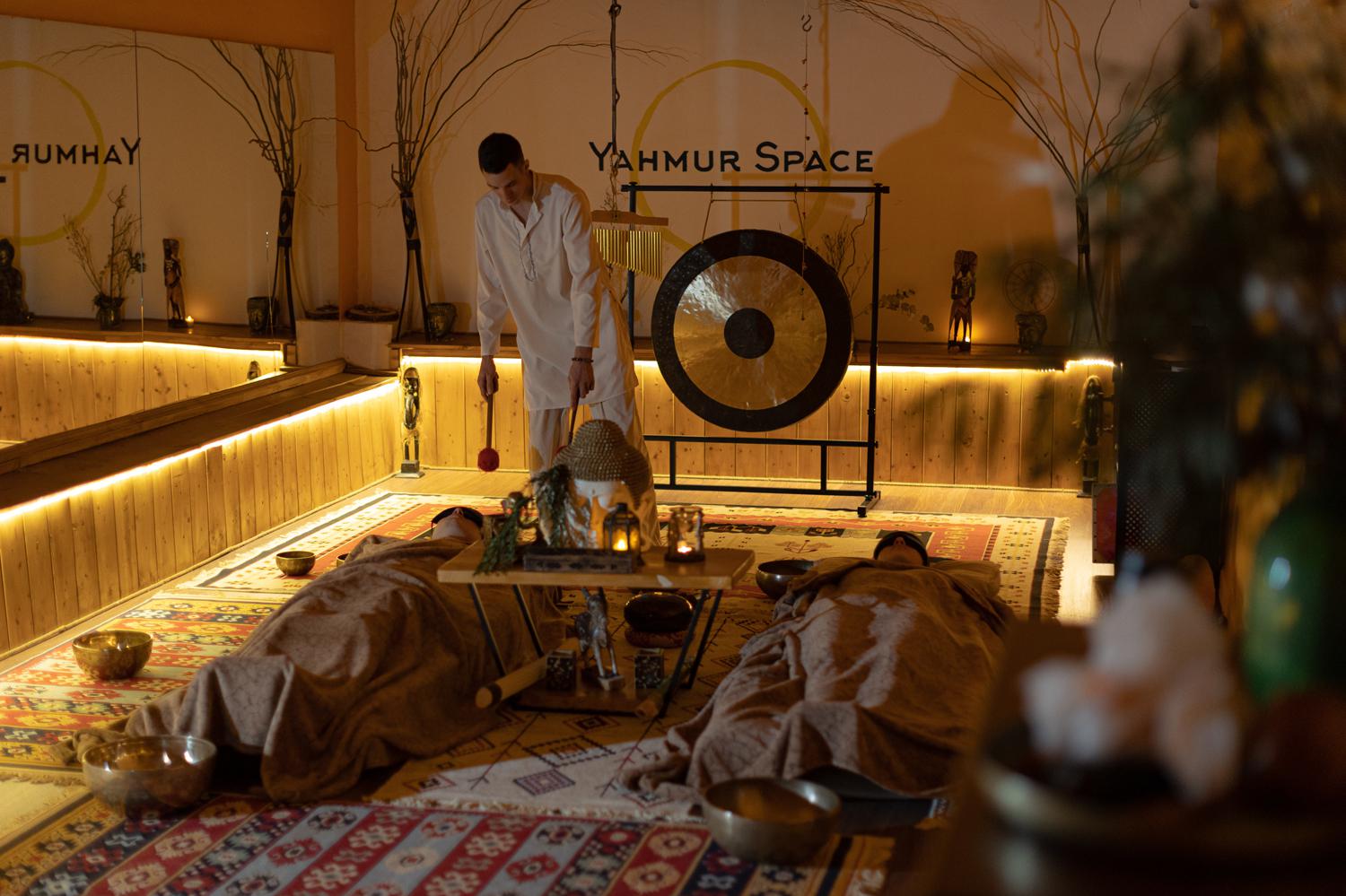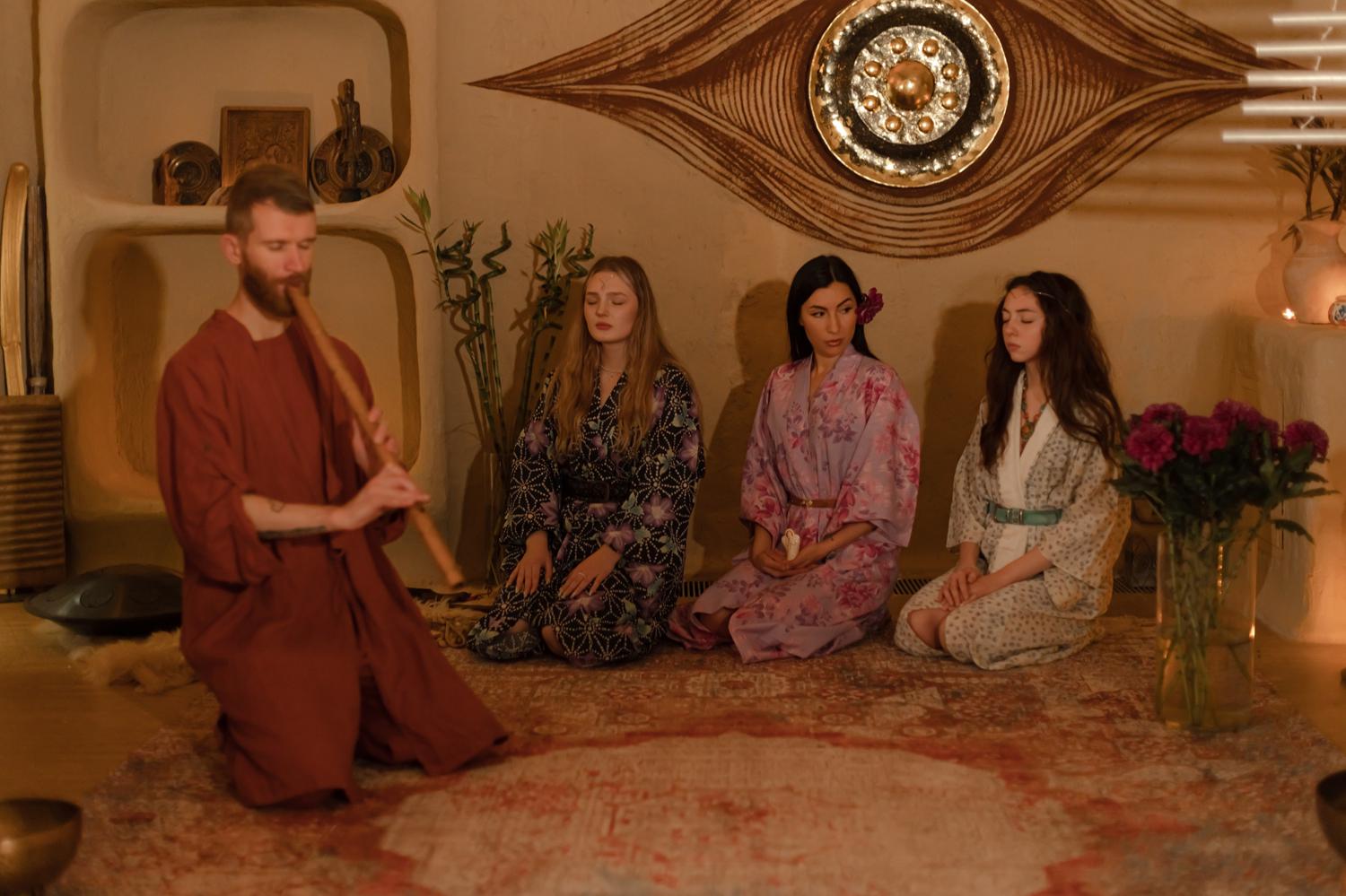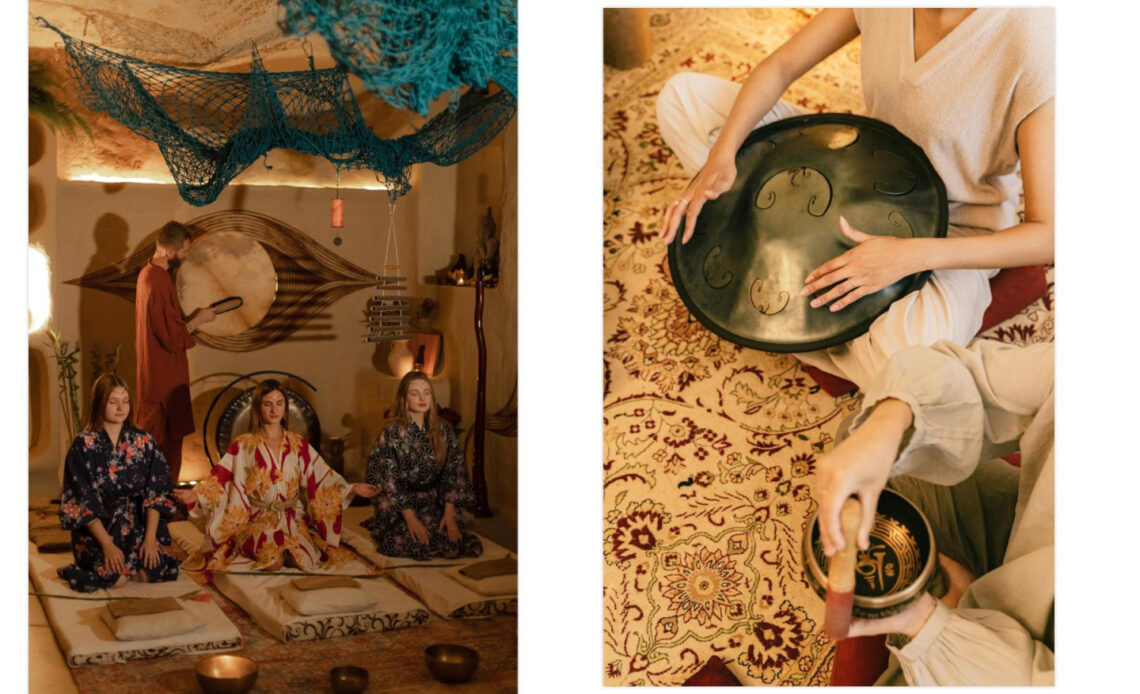
The global sound healing market, according to analysts, will reach $2.32–3.9 billion by 2032 and will almost double. In Europe, everything related to sound therapy is becoming more popular. Gongs and hangs sound not only in Moscow yoga studios and sound practice spaces, but also in bathhouses, massages, festivals and offices throughout the country. If recently only a few instructors brought a gong to classes, now this instrument is an obligatory part of practice in yoga and sound studios. The new Pilates and massage studio PPL, which was opened by Marika Kriheli and Narmin Nagibeyli, features gong meditation, Tibetan bowl playing, and kundalini yoga with mantra chanting from the first day. In the centers of sound practices Yahmur Space (there are already three of them in Moscow) by psychologist and coach Veronica Yagmur, in addition to gongs, there are crystal and singing bowls, tambourines – in total more than 90 instruments from all over the world for 27 types of practices.
Natalya Osmann, influencer, creator of the well-being studio Ashram on Malaya Nikitskaya, this summer placed chairs on the street in front of the entrance and herself attracted passers-by to meditation. Her small studio with a recognizable bas-relief of a multi-armed deity is three years old, and it is always sold out, especially during sound healing practices.
“It's important to me that meditation is accessible to everyone because of rising levels of stress, anxiety and uncertainty,” says Haussmann. “That’s why I placed chairs next to the center in the summer so that any passerby could sit down, follow the QR code and in five minutes feel the inner strength through meditation.”
Moscow mantra festivals are being held more and more often, each time attracting an impressive number of people. On the first day of meditation in Tsaritsino, more than 1,300 people came to mass practice with Sati Casanova. “Soul Fest” in Altai sounded with the voice of the mantra performer Tashani (Anna Zvizhinskaya) and the shamanic tambourines of the master of voice practices Elvira Chueva. Tambourines were also played at the recent presentation of new Natura Siberica fragrances, inspired by the theme of shamanic practices, at the Manul restaurant on Okhotny Ryad.
Alesya Kapitonova, a master of sound healing and a certified sound therapy specialist, is invited to conduct practices at presentations and in the offices of large companies to help employees find balance and become more productive. Psychologist Elena Valjak has 6–15 million views on both banned and non-banned social networks. With the help of sound meditations, she promises to improve sleep, clear away “negative programs,” and relieve insomnia and stress. In each practice, in addition to the voice, musical instruments are played.
The reasons for the popularity of soundhealing are obvious. In difficult times, the demand for alternative knowledge increases. And the masters convince those who have doubts with references to scientific research.
What is soundhilling
The word soundhealing is translated from English as “sound healing.” In Europe, such practices are called sound therapy, but using Anglicism to promote the method turned out to be more effective. Over the past 50 years, this term has been widely used in the USA, Europe and Asia. The history of the method goes deep into antiquity. Pythagoras considered music as medicine, and the ringing of bells, common in Rus', turns out to have psychotherapeutic value.
Soundhilling is a broad concept that has no clear boundaries. “Soundhealing can be considered ringing bells, playing the harp, and sounds of nature, that is, any pure sound vibrations,” says Natalya Osmann. — Now there are many experiments with electronic music, which also work as therapy. Sound can heal and improve your physical and psycho-emotional state.”

And yet, the development of sound therapy as a business and the emergence of schools where specialists teach, forces practice experts to distinguish between terms.
Veronica Yagmur, psychologist and founder of the Yahmur Space sound practice centers, identifies six main practices:
- Gong. Using large metal discs that produce powerful vibrations and resonance.
- Singing bowls. Made of metal that produces deep and long-lasting tones when rubbed.
- Tibetan singing bowls. Their shape resembles an inverted bell, the narrow rim of which is struck with a wooden mallet.
- “Crystal” bowls Quartz crystal produces high and clear sounds.
- Bowls with “singing crystals”. Vessels filled with crystal, quartz or amethyst emit different sound frequencies depending on the stones used.
- Hang. A metal percussion instrument that produces gentle sounds.
How does this work
There is more and more scientific research on the effectiveness of singing bowls. There is evidence that they reduce anxiety and alleviate symptoms of depression. There is more and more data on the effect on heart rate, blood pressure and respiration.
“Today, the vibroacoustic effect on a person of singing bowls is equated to a massage, although there is no direct contact with the body during the session,” says Elena Bogacheva, president of SWIC, expert, wellness coach, business trainer, founder of the Spa Star rating. “Sound waves can physically relax tissues and eliminate bodily tension and spasms.” She says that singing bowl sessions, whether traditional Tibetan or modern quartz, are offered at almost all spas. “Schools for training specialists in working with bowls are emerging, and the method itself is patented in Europe, and scientific research on it continues,” Bogacheva lists. “By the way, this year the Spa Star rating includes sanatoriums that use sound healing practices.”
Perhaps the increasing number of studies on singing bowls is due to the fact that this practice is always individual, it can be done one on one, combined with classical massage or bath rituals, or in small groups. The instructor is always “in tune” with his client.
Gong meditations are common in recorded form, but live sound and audio work differently. “In practice, live music has a more active effect on the physical and mental state,” explains Kapitonova. — An audio recording only affects the nervous system, you listen to it, calm down, and perhaps fall asleep. The direct sound of any musical instrument will give a deeper effect.”
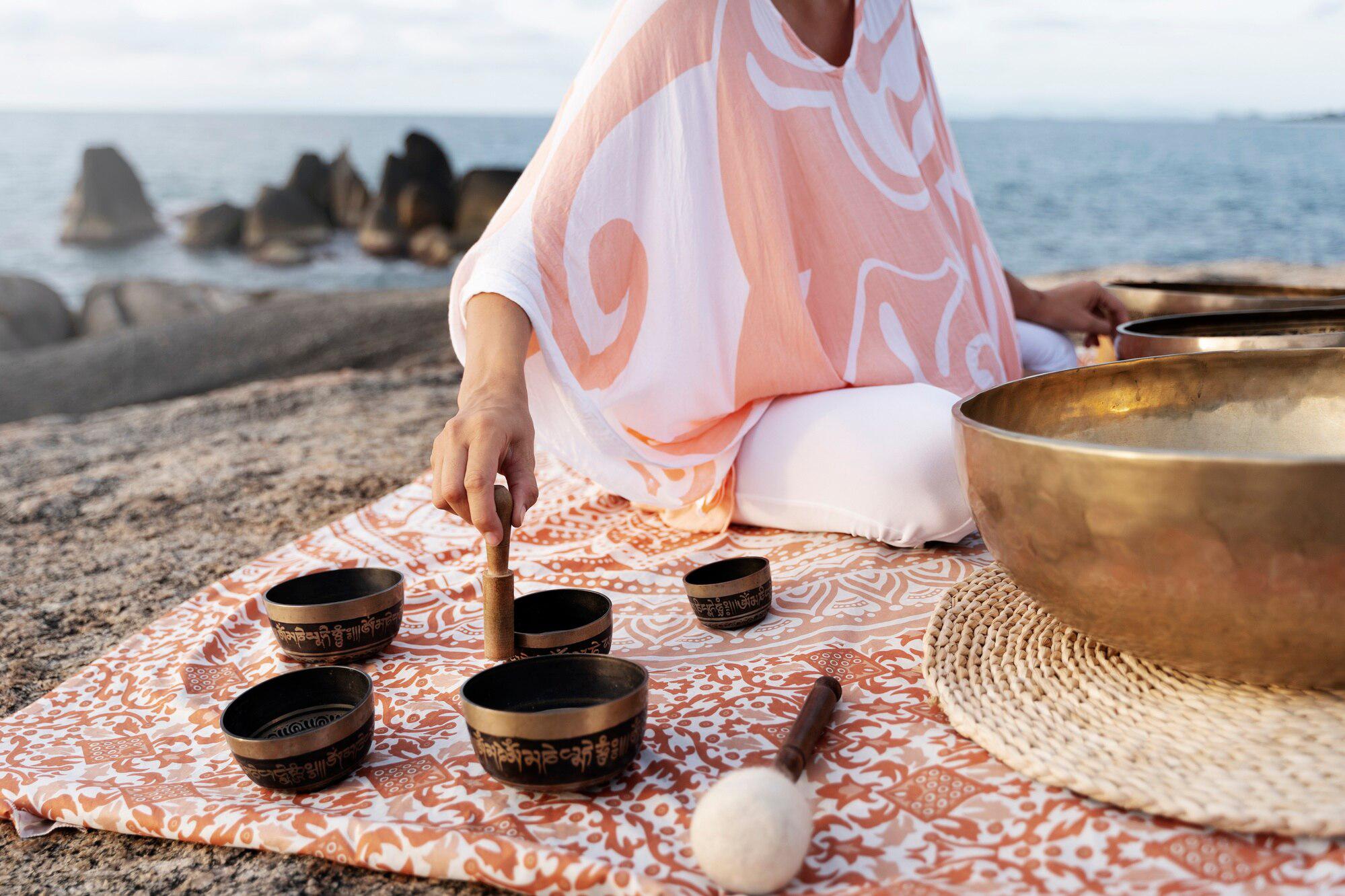
Where to start
“The reason for the growing popularity of sound therapy, as well as other non-traditional practices, is safety and absolute comfort for a person,” notes Bogacheva. Soundhealing masters often compare this practice to psychotherapy, but during the session there is no need to speak out, just lie down and relax. You don’t need sneakers or sportswear, the main thing is to come in comfortable clothes, relax and listen.
How to choose your center and not fall for a charlatan? To do this, you need to understand who they are – the people who popularize sound healing. Among the instructors you can meet musicians, psychologists, hypnologists,…

